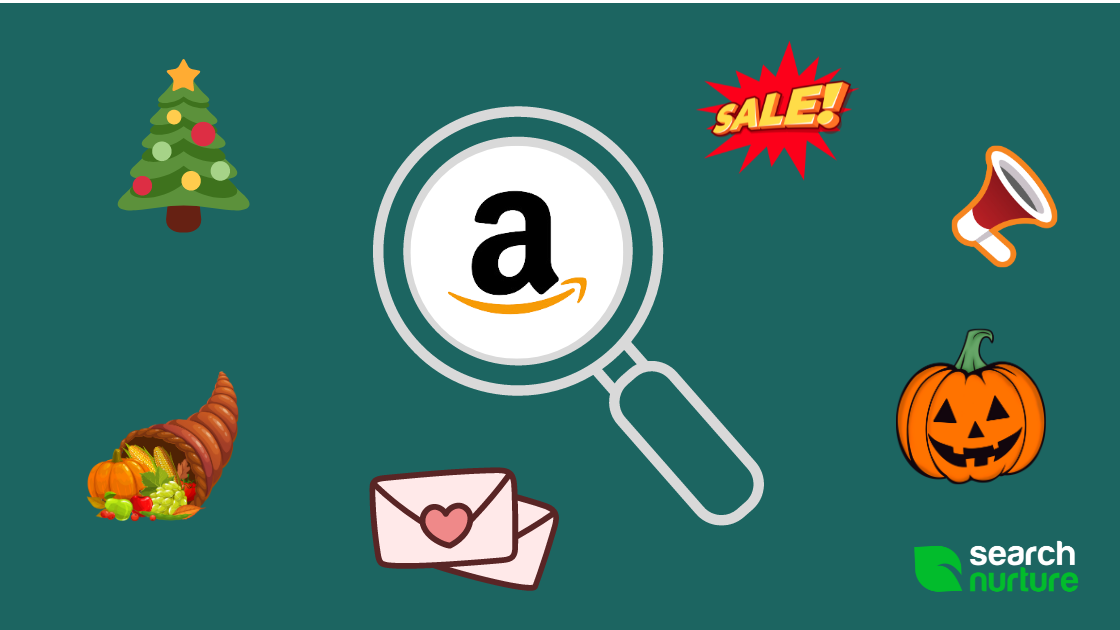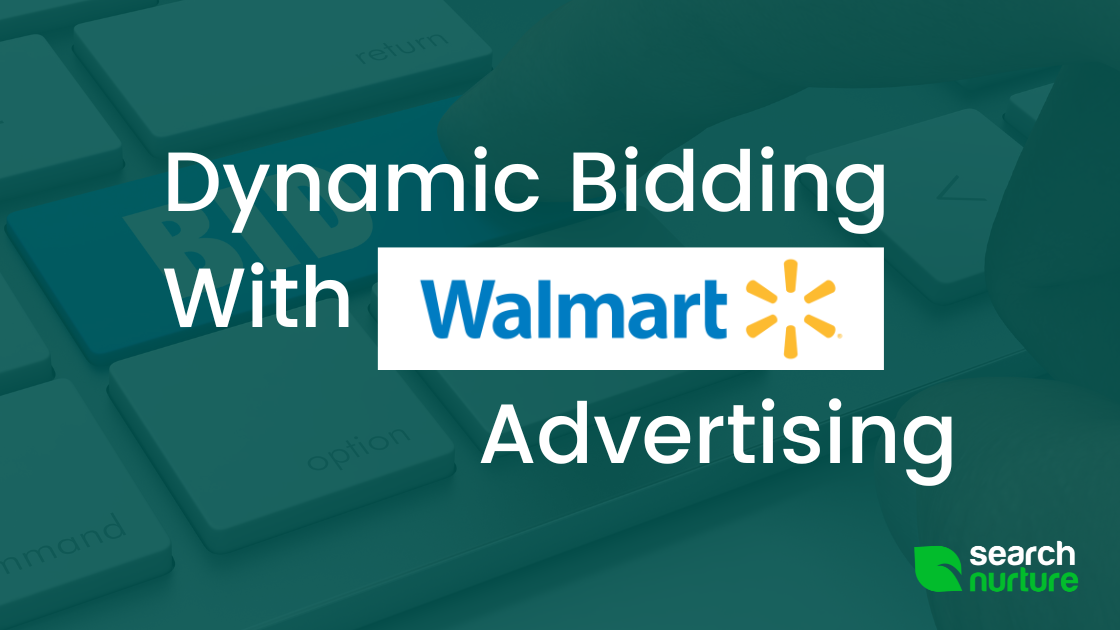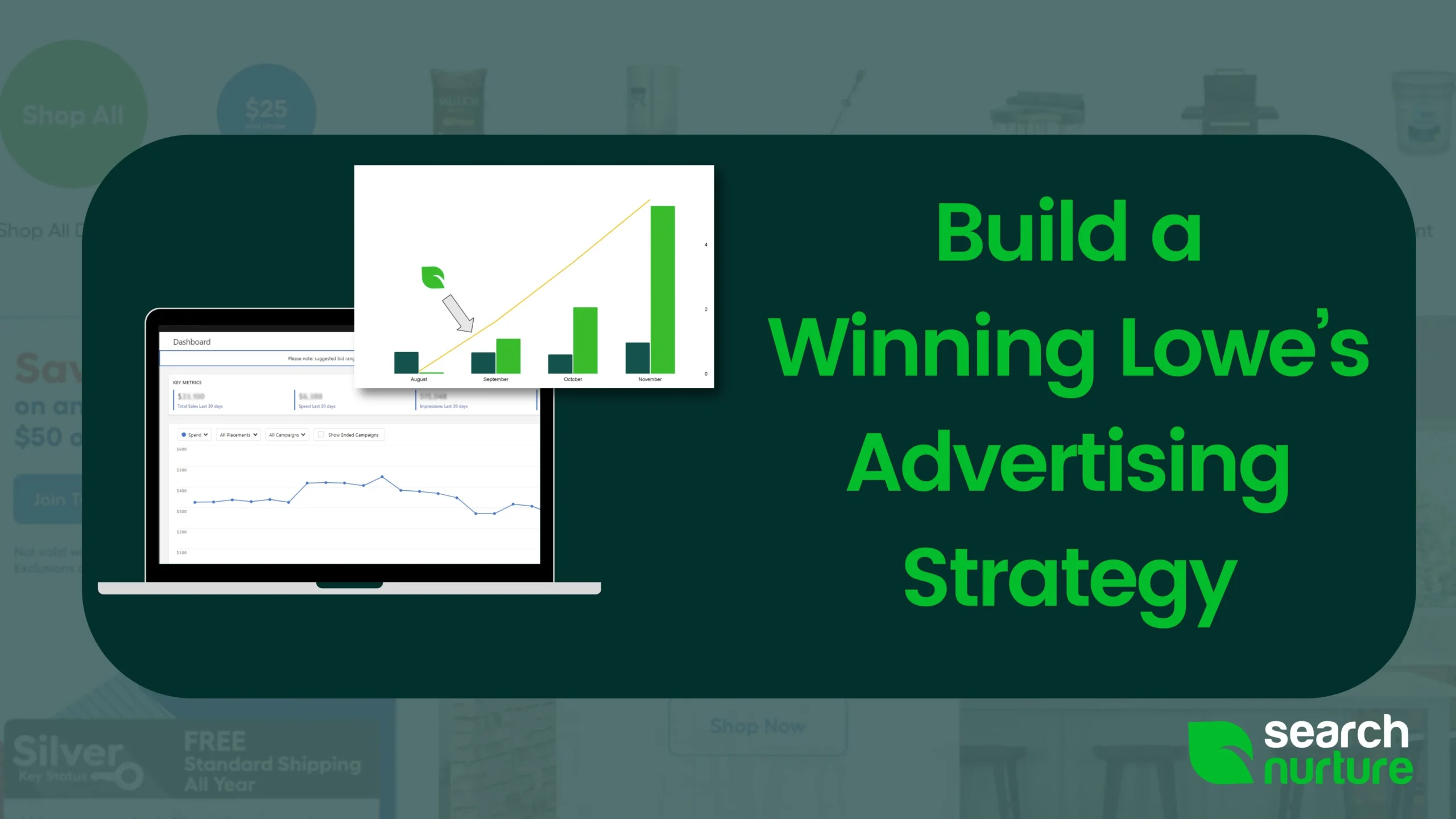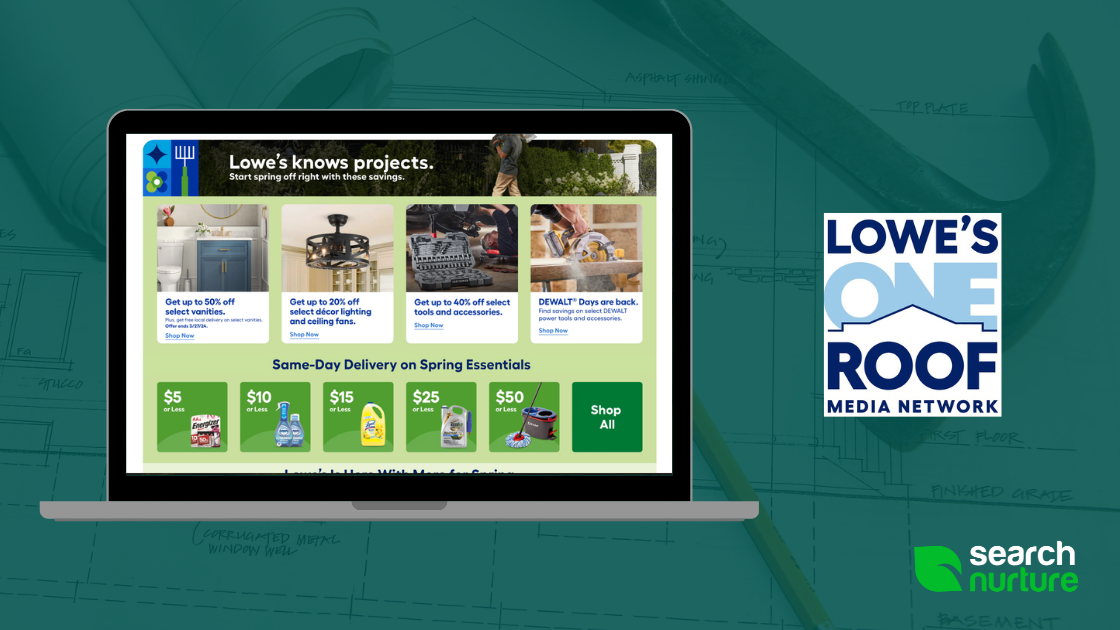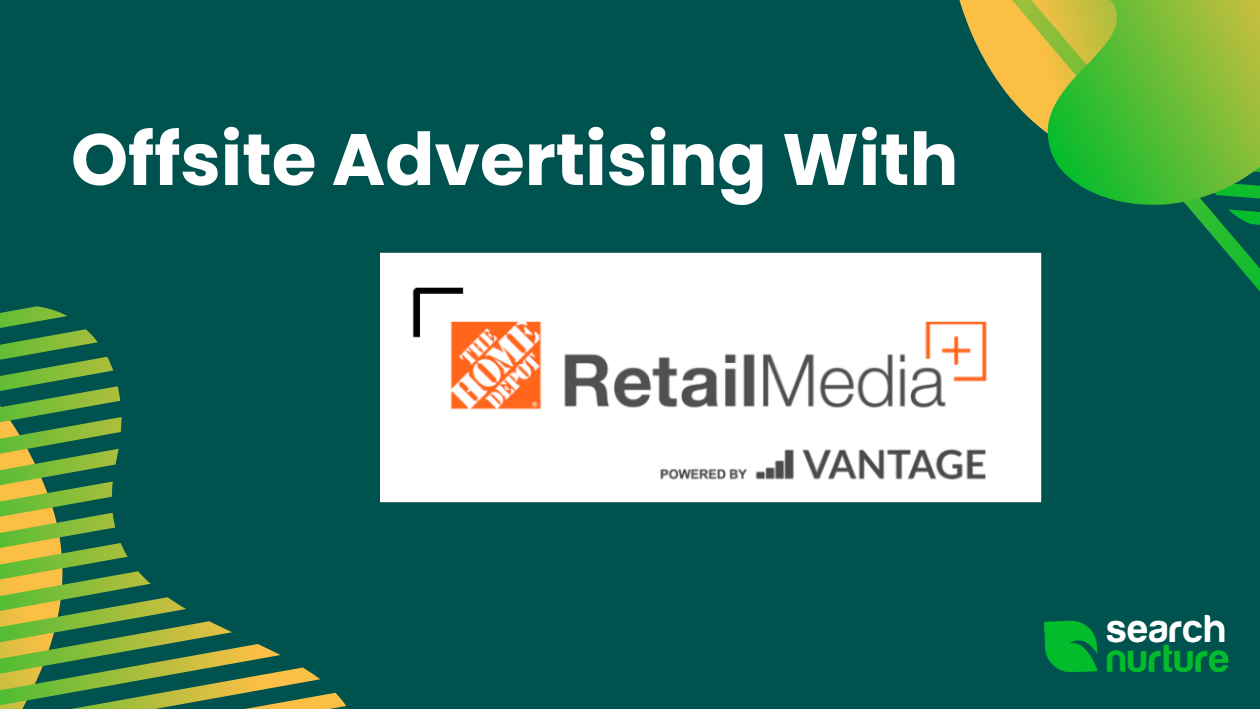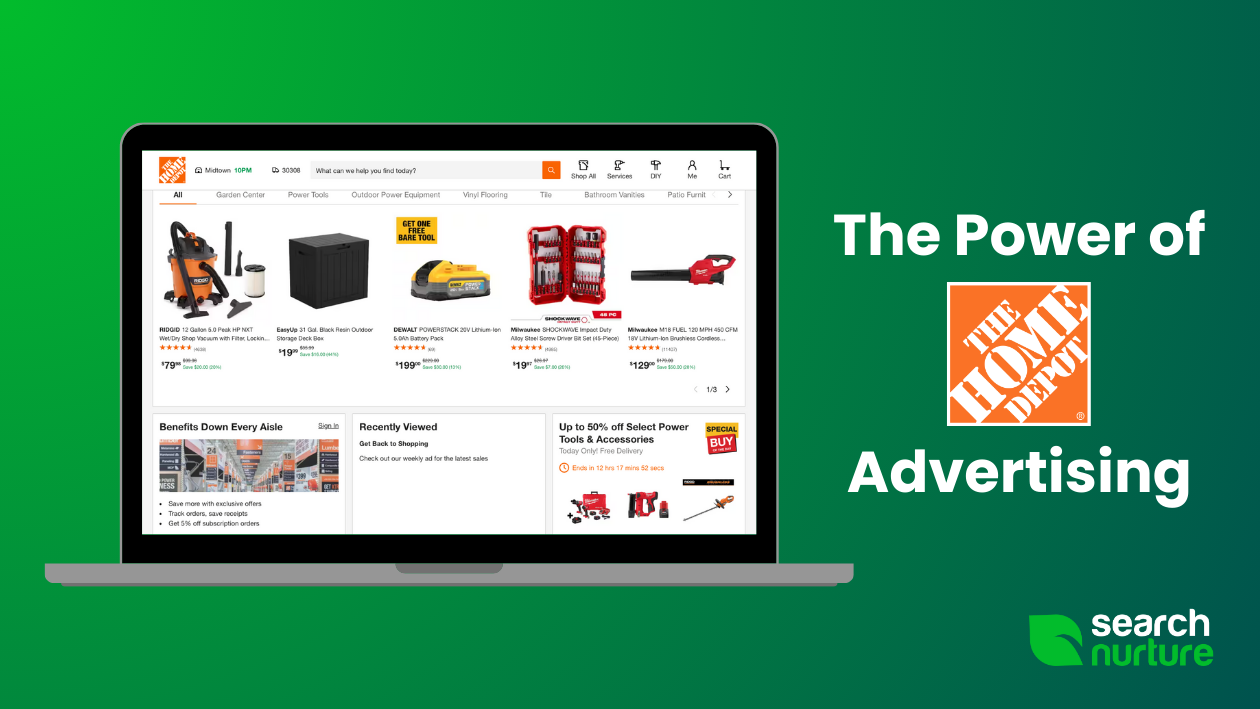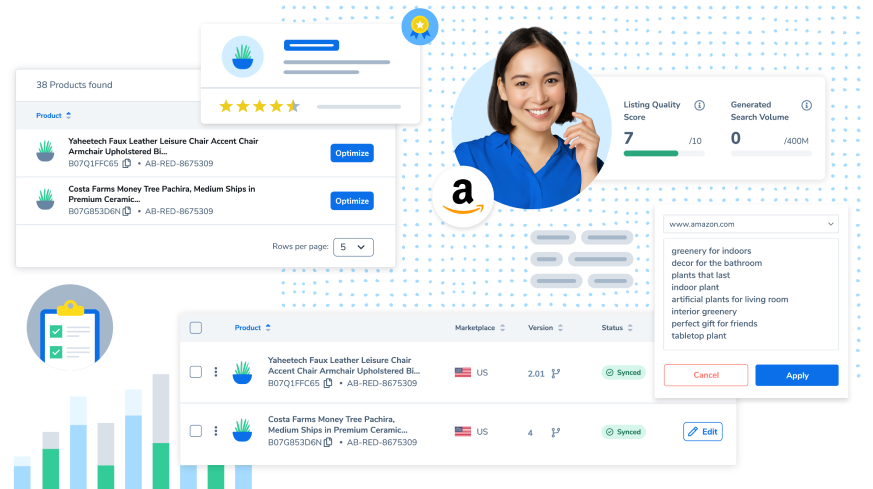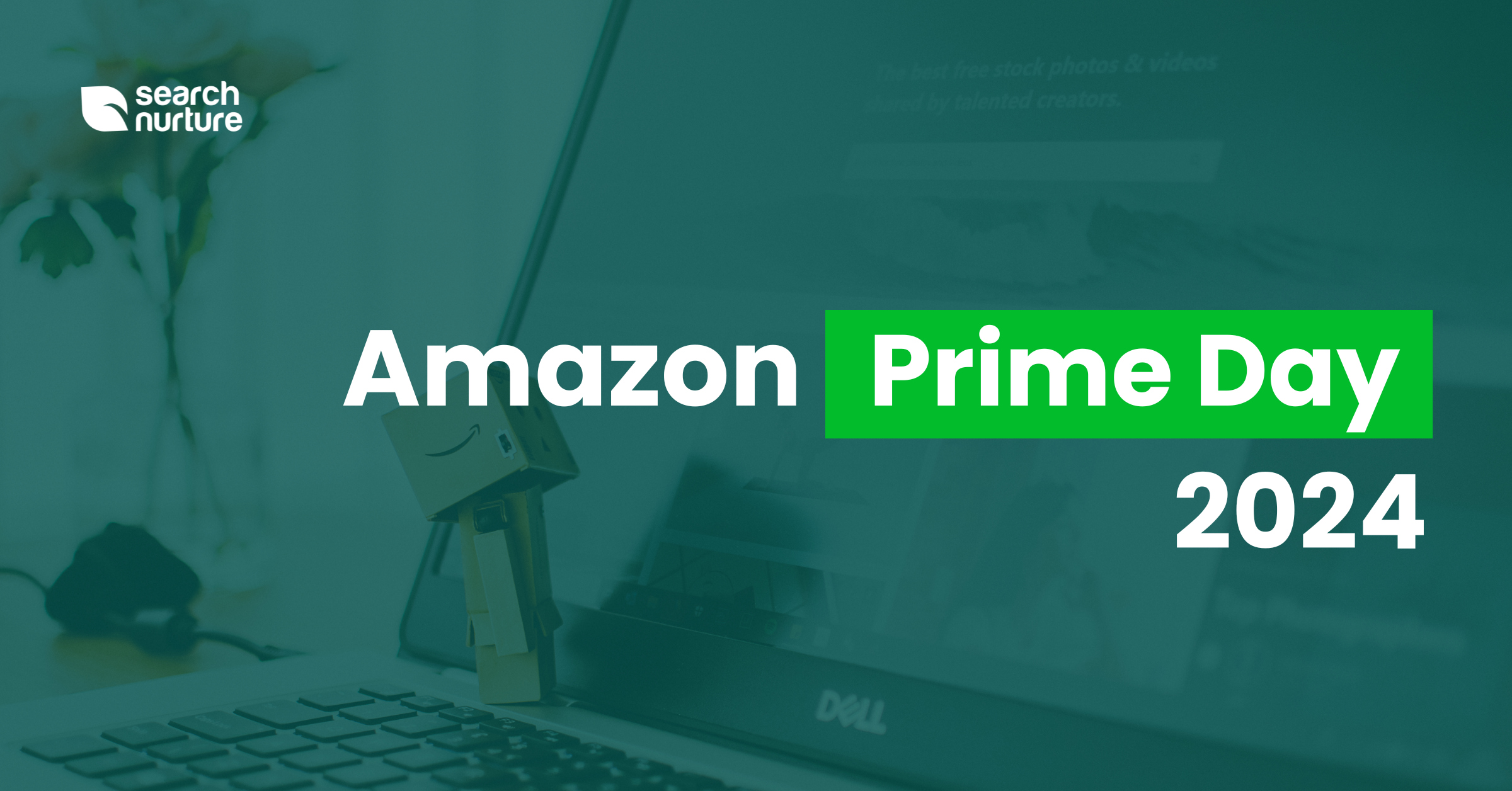Timing is everything in marketing, especially for big retail holidays. To help you get it right, the advertising team at Search Nurture pulled data from Amazon brand analytics to see when consumer interest really takes off for holiday products so we can properly plan our brand and product advertising campaigns.
Curious about the best time to kick off the next holiday marketing campaign? It’s earlier than you may think. For example, a 2024 study revealed that 38% of the general population plans to start holiday shopping before September. Keep reading to discover key holiday search insights from Amazon keyword data so you never miss a deadline.
When Should You Start Marketing For Halloween?
You should start working on your Halloween marketing campaigns in June. Have you heard of “Summerween?”
The new word originated in a 2012 TV episode but recently gained traction via social media in 2024. As digital marketers, we can use the term as the starting point for our Halloween marketing tactics. Brick-and-mortar stores typically start putting out their Halloween items shortly after the Fourth of July, and there’s no reason we shouldn’t do the same. Amazon keyword data reveals that many people really do start thinking about their Halloween shopping during the summer months.
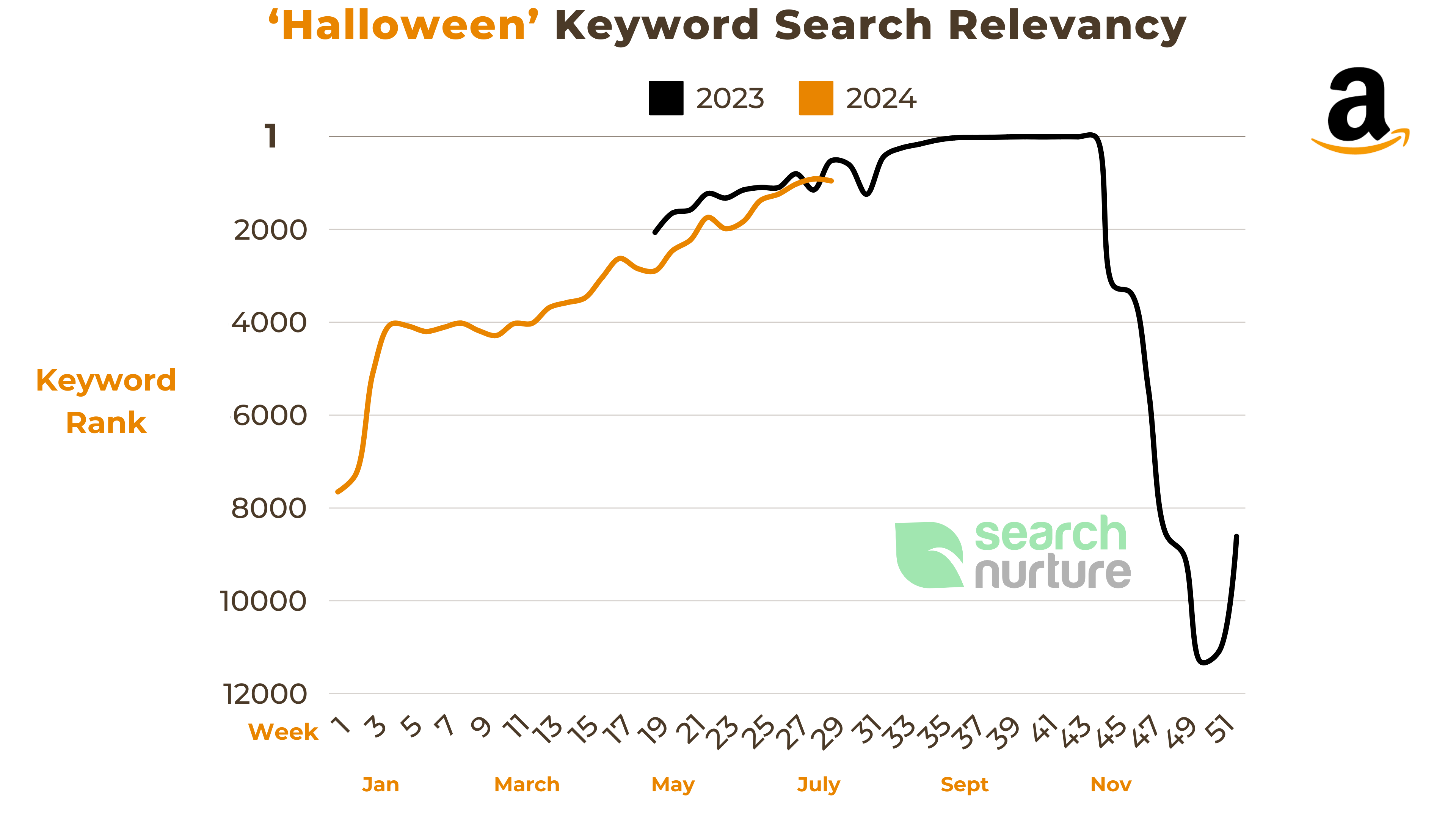
Amazon data reveals that searches for “Halloween” are on an upward trend pretty much from the new year up until the actual holiday. Taking a closer look at keyword searches from June through October in the chart below, we can see that, by mid-July 2023, “Halloween” ranked No. 521 overall. That’s a big deal given that the holiday was still three months away. It was in the top 100 most-searched keywords by the end of August.
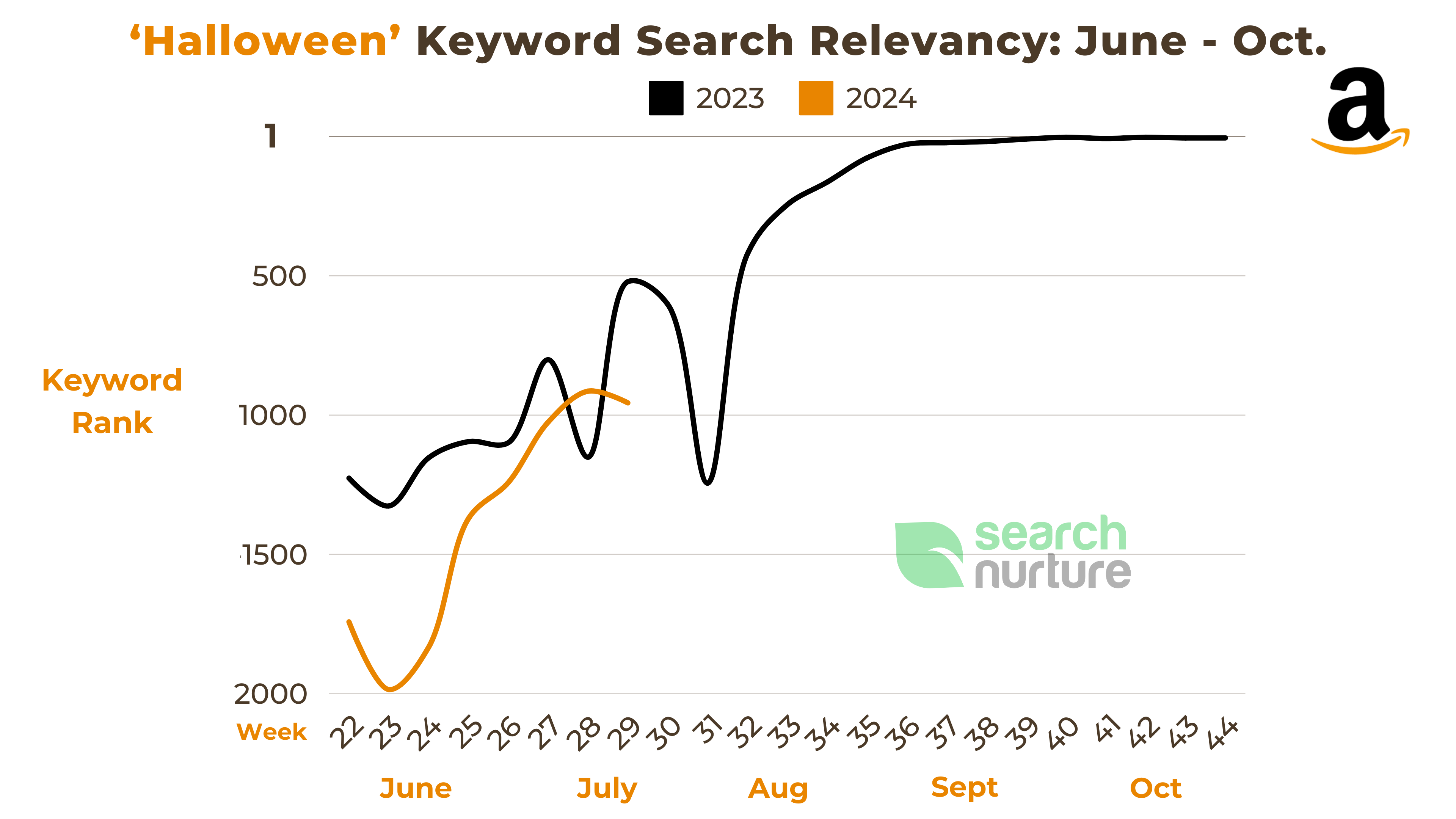
Research from the National Retail Federation backs this up, reporting that 45% of consumers plan to shop for Halloween in September or earlier. Halloween is a major event for many businesses, especially those that sell home decor, costumes and candy. But when should you start marketing efforts for Halloween?
Halloween Marketing Timeline
June: Start planning your Halloween campaign. Brainstorm ideas for visuals, videos, creative copy headlines and promotions.
July: Research trending Halloween-related keywords to incorporate into your campaign. Have your marketing materials ready to go live by the end of the month.
August: Launch your campaign and start cross-channel promotions. Use the relevant keywords to your product to create engaging Halloween-related ads.
September: It’s time to intensify your advertising efforts. Launch special Halloween promotions, targeted ads and complementary social media campaigns.
October: It’s crunch time. Keep the intensity going and run additional promotions to capitalize on last-minute shoppers.
When Should You Start Marketing For Thanksgiving and Black Friday?
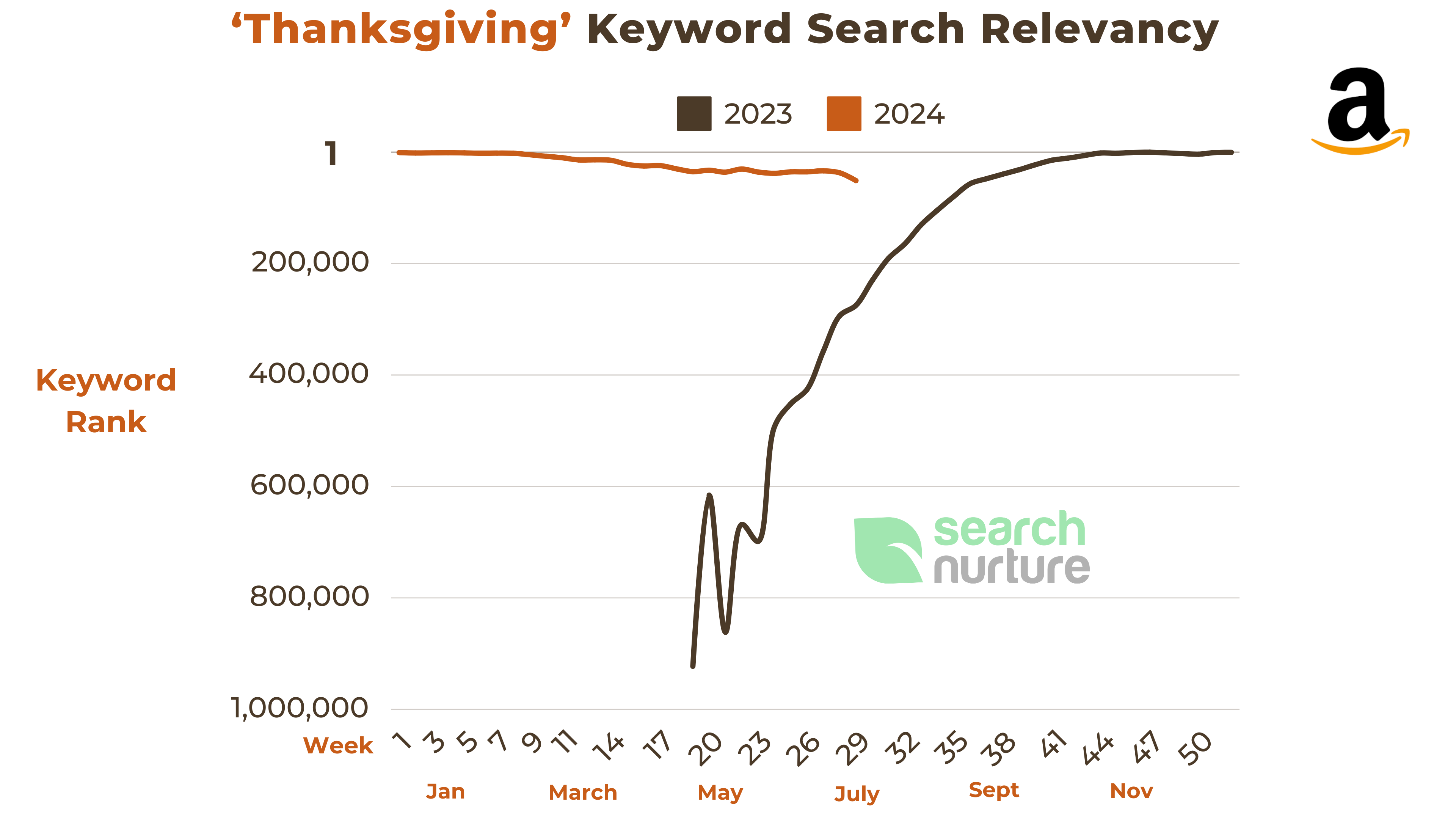
From a marketing standpoint, Thanksgiving isn’t just about the day anymore. It’s become one of the busiest shopping events of the year, known as “The Turkey Five” or “T5.” The Turkey Five signifies the five days from Thanksgiving Day through Cyber Monday. (Rumor has it it’s changing to T-12 this year, but that’s a blog for another day)
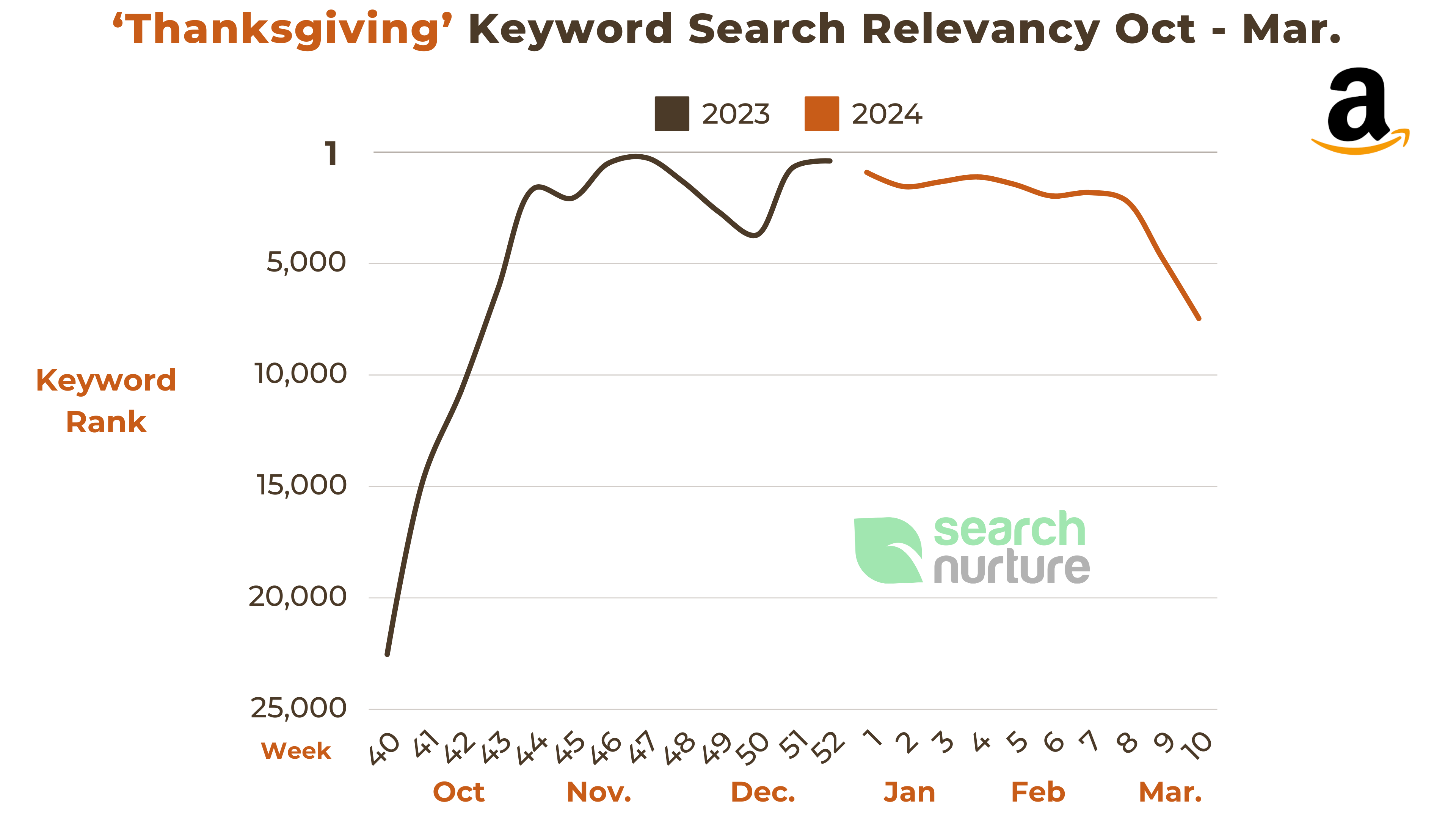
Taking a closer look, the keyword “Thanksgiving” doesn’t start to hit a top rank until the end of October to middle of November. However, most shoppers around this time are already thinking about holiday gifts, so search terms would likely be higher for specific items versus the holiday name. Interestingly, search for Thanksgiving stays pretty high into the New Year before tapering off for March.
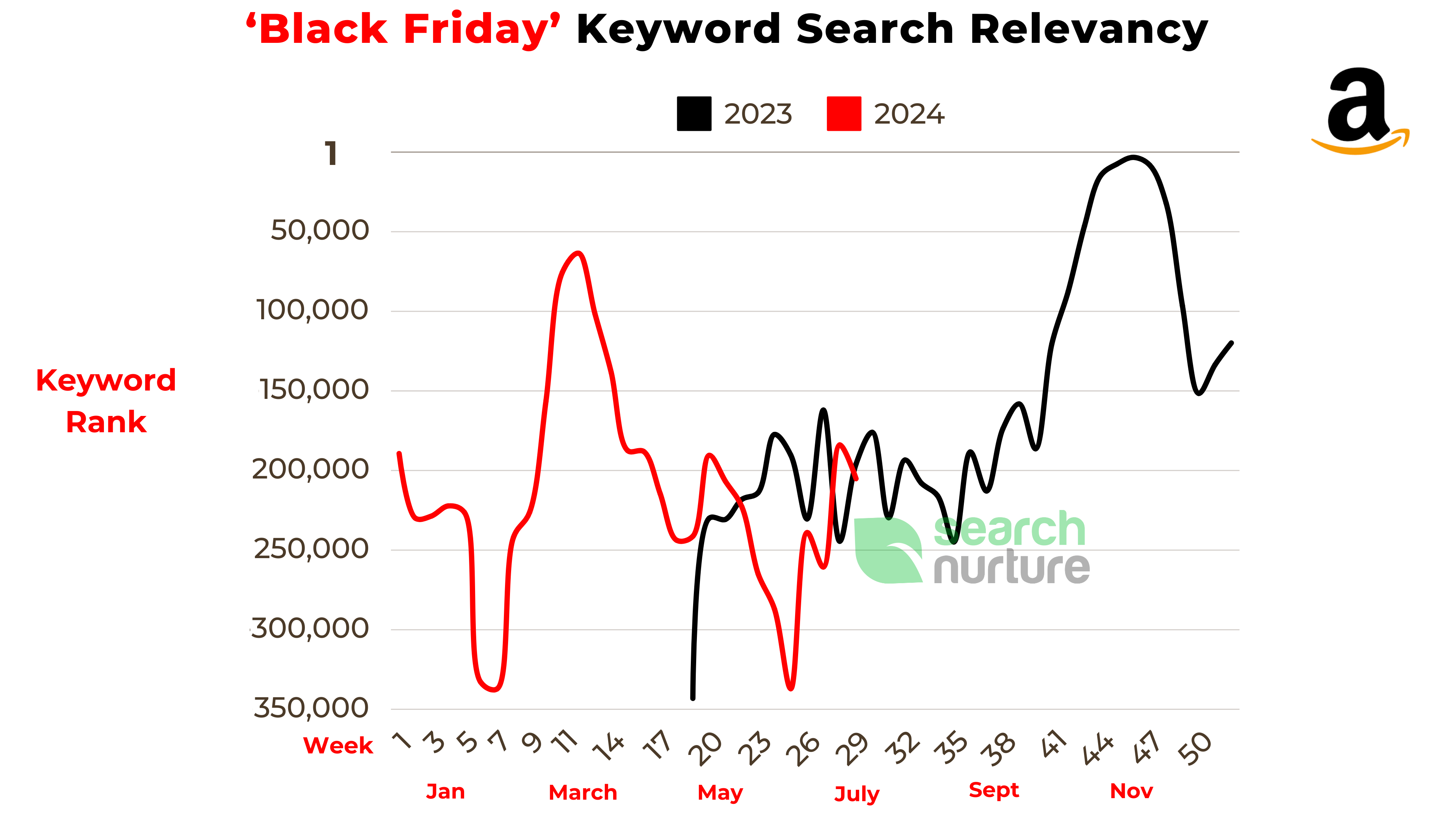
Amazon keyword data for “Black Friday” is a more unique trend. In 2024, there’s already been a spike in interest around March, likely due to retailers like Home Depot participating in a “Spring Black Friday” and Wayfair’s Black Friday in July. Predictably, searches for “Black Friday” trend upward again in September and spike in October and November.
Ideally, you should create campaigns that can work across all of the Thanksgiving shopping days, with different copy speaking to each day you’d like to target at various times. Below is a timeline rundown of your Turkey Five marketing plan.
Turkey Five Marketing Timeline
July/August: Outline your marketing strategy and allocate budgets for the Turkey Five promotions. Focus on identifying your target audience and crafting messages that resonate with them.
September: Create compelling content and visuals for your campaign. This is also the time to solidify on any special offers or discounts you provide during this shopping period.
October: Start teasing your Turkey Five promotions through social media and email marketing to generate consumer excitement and anticipation.
November: Launch your full marketing campaign. Utilize targeted ads, social media blitzes, and engaging email newsletters to drive traffic to your store. During the Turkey Five, ensure that your promotions are prominently displayed and that your website is fully equipped to handle increased traffic.
When Should You Start Marketing For Christmas?
Summerween may be news to you, but you likely know about “Christmas in July.” It’s not too early to start thinking about the holiday shopping season in the summer.
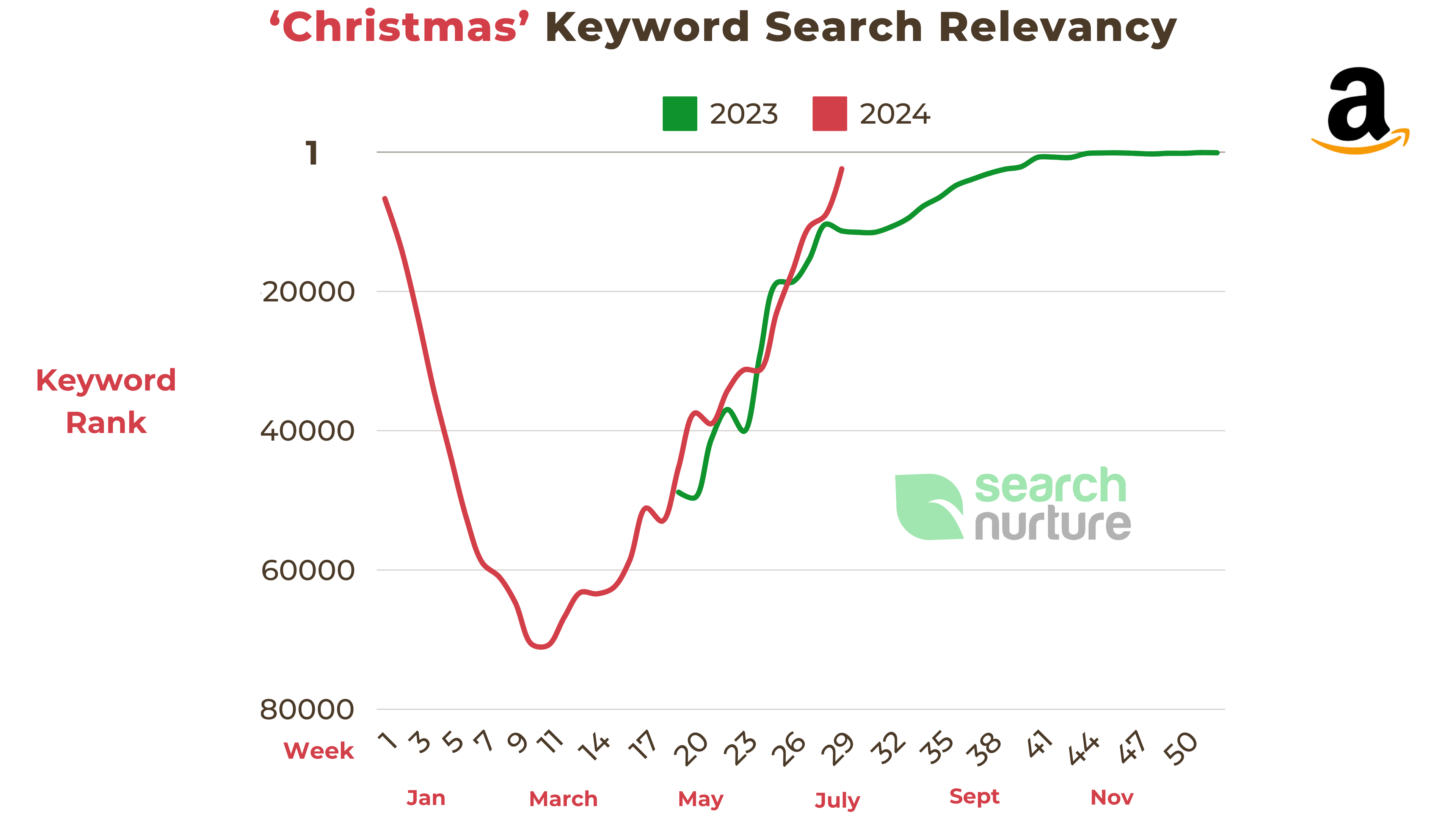
According to Amazon search data, consumer searches for “Christmas” start picking up in June and July before peaking as early as September. In 2023, Christmas was one of the top 100 Amazon keywords before the end of August and skyrocketed to the top 30 within the first week of September.
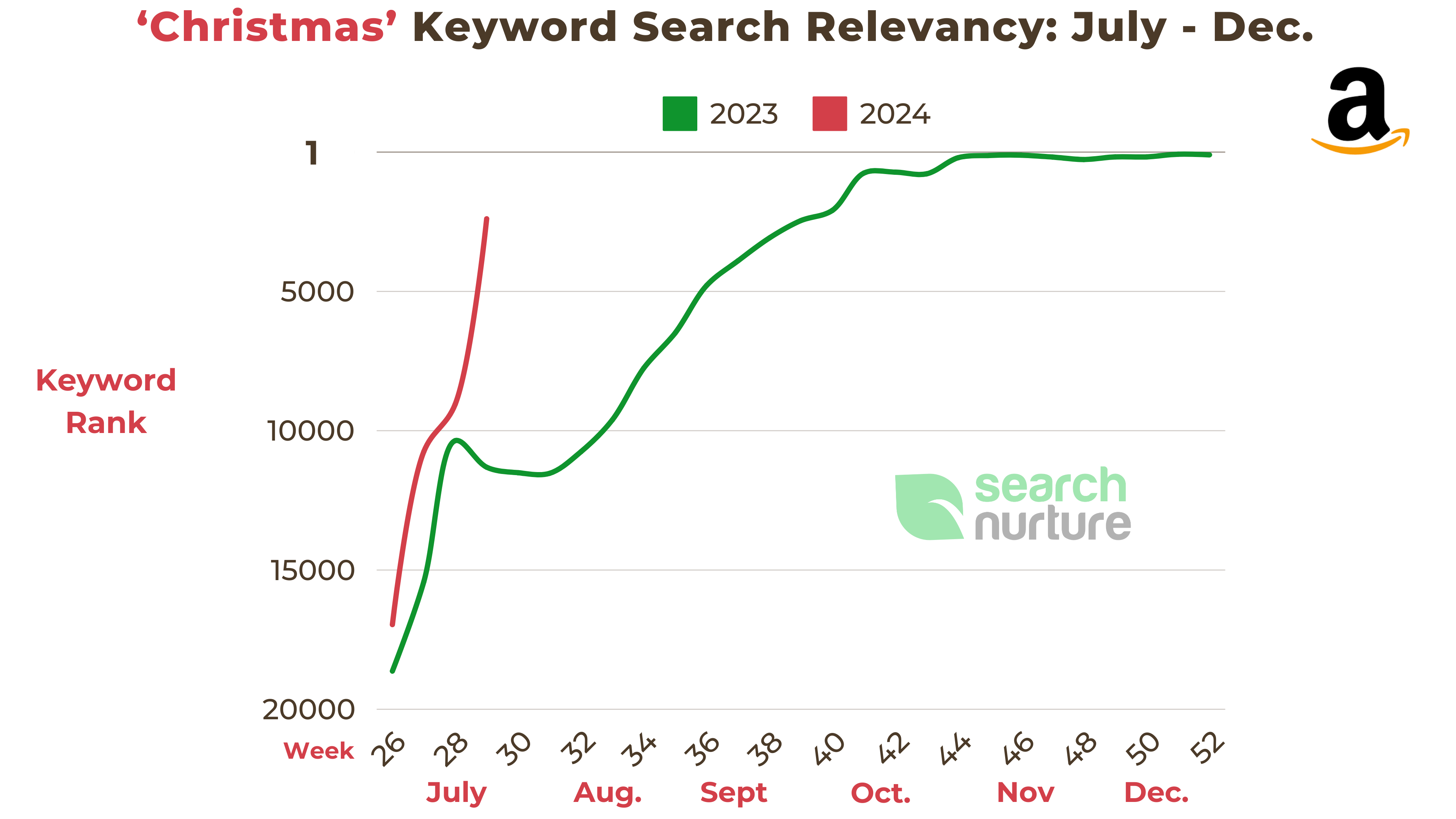
Christmas Marketing Timeline
July: Begin loosely planning your holiday marketing strategy and budgeting accordingly. You may also consider launching a “Christmas in July” promotion to attract early shoppers and capitalize on the summer’s retail “dead zone.”
August: Develop creative assets such as graphics, videos, and social media posts that align with your chosen theme or message for the season. Have all of your marketing materials ready to go by the end of August.
September: Start promoting your holiday sales and promotions through email marketing and social media. You can also begin stocking up on popular holiday items to ensure you have enough inventory to meet demand.
October: Continue promoting your upcoming holiday deals and start offering pre-orders for popular items to give customers a sense of urgency. Consider hosting a preview or kick-off event in-store or online to generate excitement among consumers.
November: Launch your full-scale holiday marketing campaign, including targeted ads, engaging social media content, and personalized email newsletters. Don’t forget to highlight any special offerings or events that set your business apart from others during the holidays.
December: Keep up the momentum with continued promotions and advertising. Offer special deals or discounts to attract those last-minute shoppers, making sure to promote products or services that will arrive by Christmas.
When Should You Start Marketing For Valentine’s Day?
While Valentine’s Day is a significant retail holiday, it seems Cupid’s Arrow doesn’t need to travel that far to reach your consumers. By that, we mean you don’t have to plan your Valentine’s Day promotions too far in advance.
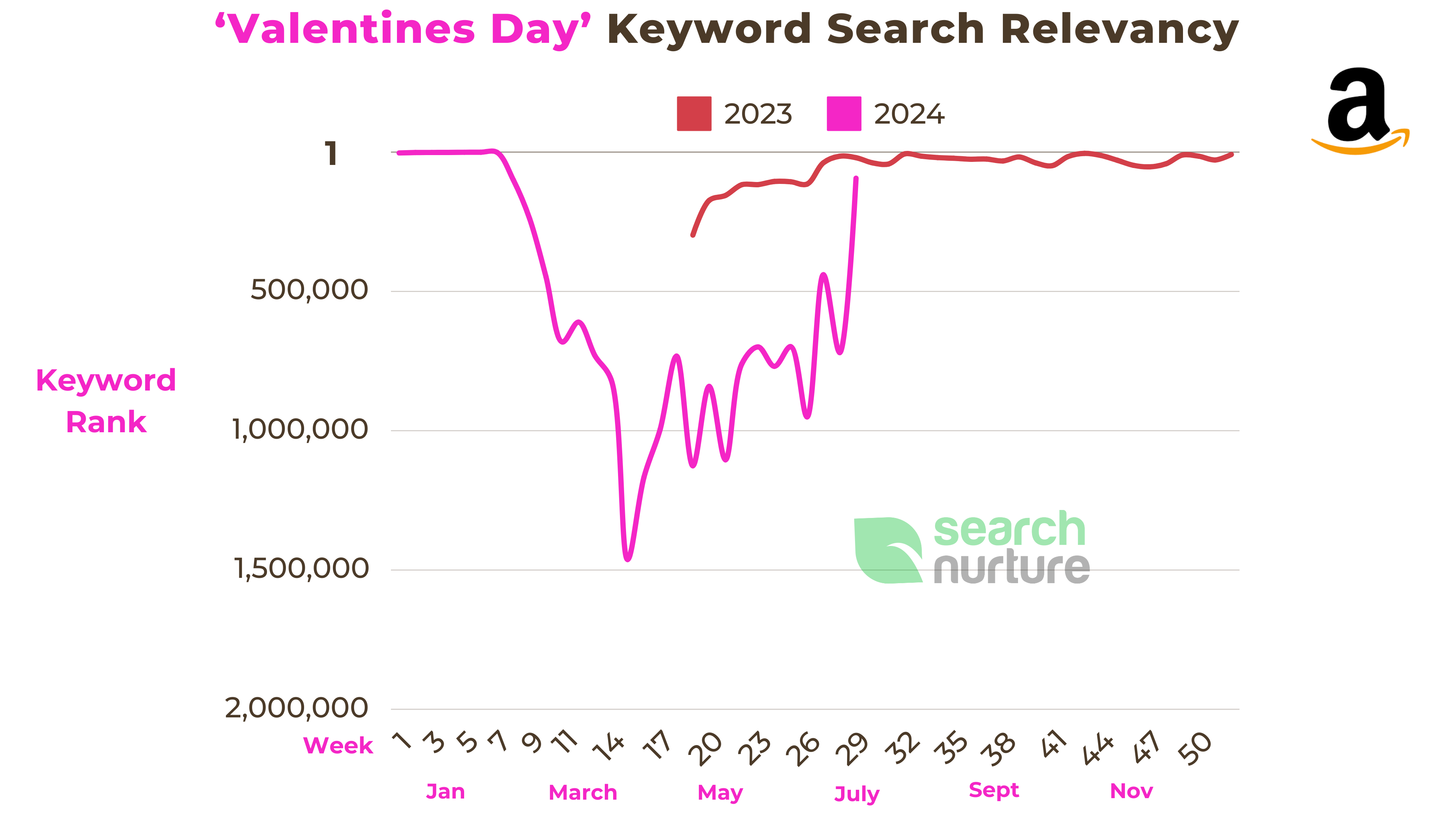
Amazon search trend data reveals that most consumers don’t start looking for Valentine’s Day products until January, which is music to retail marketers’ ears after the exhaustion of the holiday season.
Valentine’s Day Marketing Timeline
Late December: Unless your business is hyper-focused on Valentine’s Day products, it’s safe to wait until after Christmas to create your V-day marketing plan.
Early January: Develop creative assets such as graphics, videos, and social posts
Mid-January: Start your Valentine’s Day advertising campaign.
When Should You Start Marketing For Prime Day?
While it’s not an official holiday, Amazon Prime Day is one of the year’s biggest retail events. So, it’s worth discussing in a guide about holiday marketing planning.
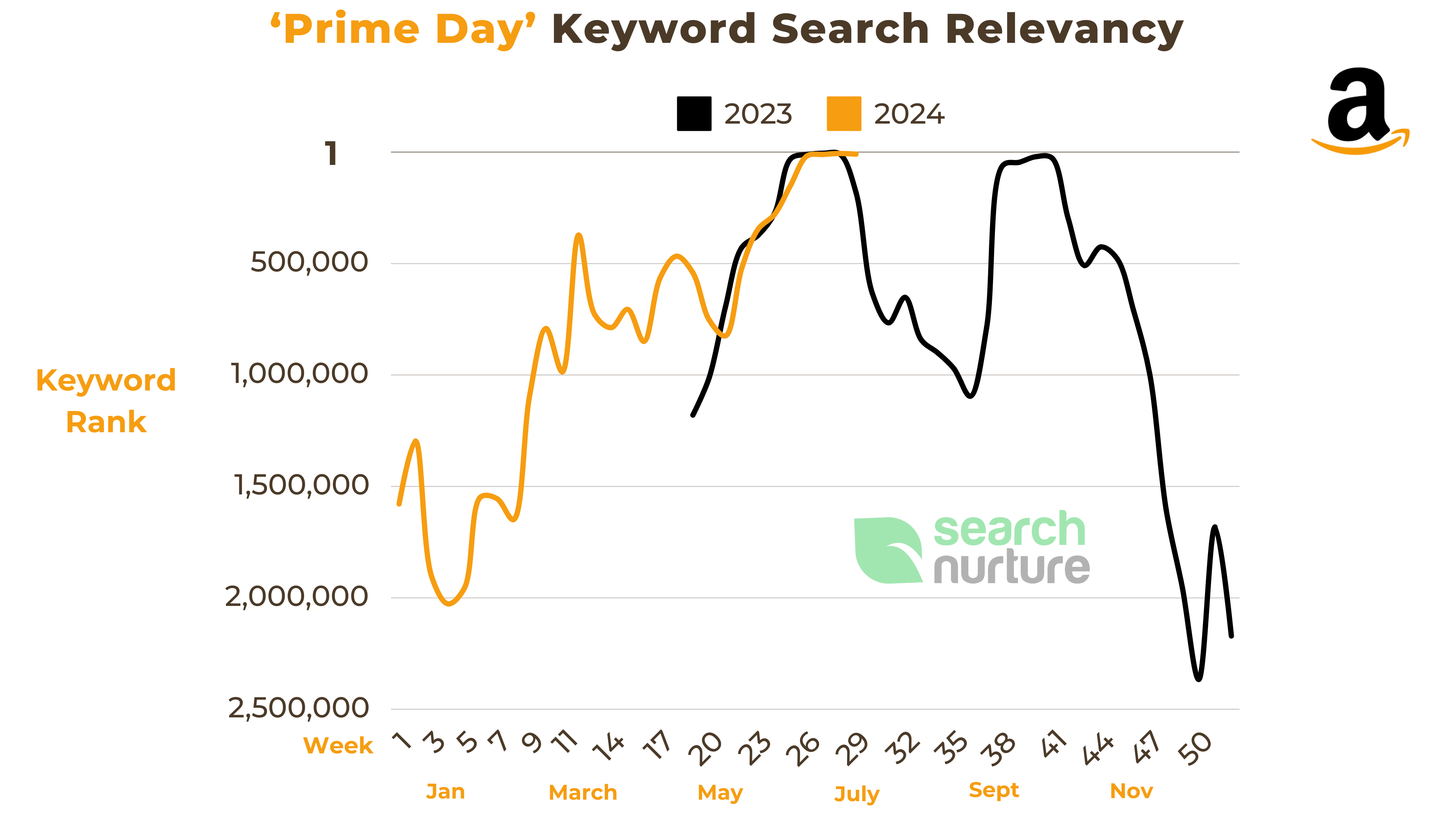
As seen in the chart, search buzz for July Prime Day started much earlier in 2024 compared to 2023. In 2023, the keyword “Prime Day” started gaining a lot of traction in June and staying sturdy through July. When Amazon announced a second Prime Day in October, search volume picked back up in late September for the epic deals day.
Comparatively in 2024, the number of Prime Day searches climbed in March, before dipping down and gaining popularity again in June. It’s unknown whether Amazon will announce a second Prime Day in 2024, but if the past two years are any indication, we can expect an October Prime Day announcement sometime in September. We’ve made Prime Day Marketing timelines for both July and October, just in case.
Amazon Prime Day Marketing Timeline: July and October
Two Months Out: To ensure a successful Prime Day, you should start preparing two months in advance. Think: May for July Prime Day or August for October Prime Day.
One Month Out: Start promoting your Prime Day Deals early, with a focus on email marketing and social media. Create buzz around the upcoming deals and build anticipation among your customers.
Week Before Prime Day: Increase promotions through targeted ads, influencer collaborations, and other digital marketing strategies. This is also a good time to update your product listings on Amazon to ensure they are optimized for Prime Day shoppers.
Week of Prime Day: The day before Prime Day, send out reminder emails to your subscribers and create urgency by highlighting limited quantities or time-sensitive deals.
Let Us Handle Your Holiday Marketing Plans
If this Amazon keyword data teaches us anything, it’s that marketers need to be thinking two holidays ahead to have the most successful return on ad spend for the holidays. But creating and executing multiple advertising campaigns can be a lot to handle on top of your day-to-day tasks.
Search Nurture has over a decade of experience crafting and scaling customized retail ad campaigns. Our team has deep knowledge of both mainstream retail platforms and often-overlooked channels, providing a competitive advantage to increase your sales and amplify brand visibility like never before. Plus, you’ll get regular check-ins and 24/7 access to live dashboards, so you can see how your holiday campaigns are progressing.
Check out our case studies to see how we’ve helped our clients. We’re ready to chat when you’re ready — click this link to set up a call.

Article by


